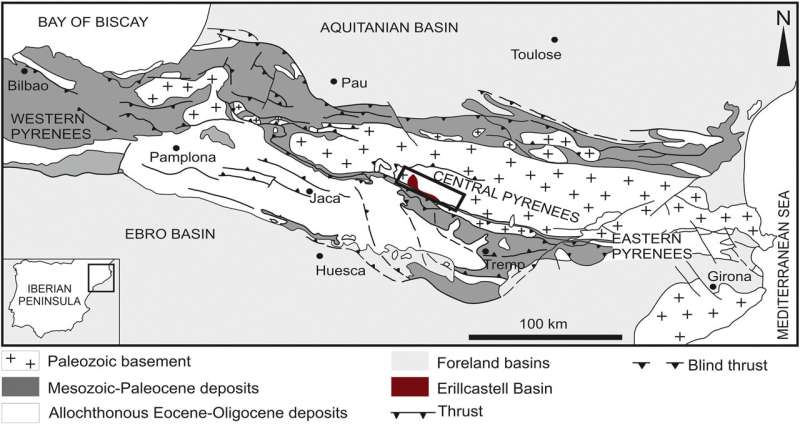Discovery of unknown habitats in the carboniferous flora in the Pyrenees

A new study reveals how the Sigillaria brardii species—a fossil plant typical of peatlands and abundant in the flora of Europe and North America during the Upper Carboniferous—colonized new areas in the riverbeds of the great European mountain range known as the Variscan mountains, far from their natural habitat.
This process of ecological dispersal of the species had only been documented in the coastal sedimentary basin —known as paralics—in the United States and northern Europe. Now, the study, published in the journal Palaeogeography, Palaeoclimatology, Palaeoecology, describes for the first time the S. brardii's colonization phenomenon in the freshwater swamps in the Variscan mountain range, an ancient geological structure in Europe—now eroded—which still presents geological outcrops in the Pyrenees and the Catalan coastal mountain chains.
The article, which expands the knowledge about the characteristics of forest ecosystems in the late Carboniferous period, included Aixa Tosal, Joaquim Pàmies and Carles Martín-Closas, from the Department of Earth and Ocean Dynamics of the Faculty of Earth Sciences and the Biodiversity Research Institute (IRBio) of the University of Barcelona.
The carboniferous flora in the Catalan Pyrenees
The team carried out sedimentological, taphonomic and palaeoecological analyses in the Erillcastell basin, on the southern area of the Catalan Pyernees, a geological area of great scientific interest for studying the creation process of the Pyrenean carboniferous basins.
Many coal mines that had been exploited correspond to old forests that ended up fossilized. In particular, the formation of the deposits of bogs in the late (Pennsylvanian) Carboniferous in the Pyrenees is associated with the accumulation of peats from plants that are evolutionarily related to the current lineage of isoetes (pteridophytes). These arborescent isoetes, from the Sigillaria genus, used to be found in swamps and bogs, in the valleys of the great Varisca mountain range.
The trunks of this plant—mainly built by a rather weak tissue or periderm—accumulated at the bottom of anoxic swamps and were easily transformed into peat. After a long geochemical maturation—under high pressure and temperature—the accumulated peat became coal (bituminous type), which was exploited in the Pyrenees at the end of the 19th century and the beginning of the 20th century, to feed the steam factories in Barcelona. Later (from 1950 to 1970), carboniferous mines re-opened in order to feed the small local cement factories in Barcelona.
Sigillaria brardii: When peatlands disappear
According to the experts, the increase in ecological plasticity of this species is associated with a time of global climate change, a higher temperature and aridity. These environmental conditions caused the reduction of the extent of the peatlands and an increase in the erosion and drainage in the mountain areas, and this would explain the new ecological distribution of the species.
"This change reached its peak in the Lower Permian, between 300 and 273 million years ago, when finally, all the arboreal representatives of this group of pteridophytes became extinct," concludes the research team.
More information: Aixa Tosal et al, Plant taphonomy and palaeoecology of Pennsylvanian wetlands from the Erillcastell Basin of the eastern Pyrenees, Catalonia, Spain, Palaeogeography, Palaeoclimatology, Palaeoecology (2022). DOI: 10.1016/j.palaeo.2022.111234
Journal information: Palaeogeography, Palaeoclimatology, Palaeoecology
Provided by University of Barcelona



















